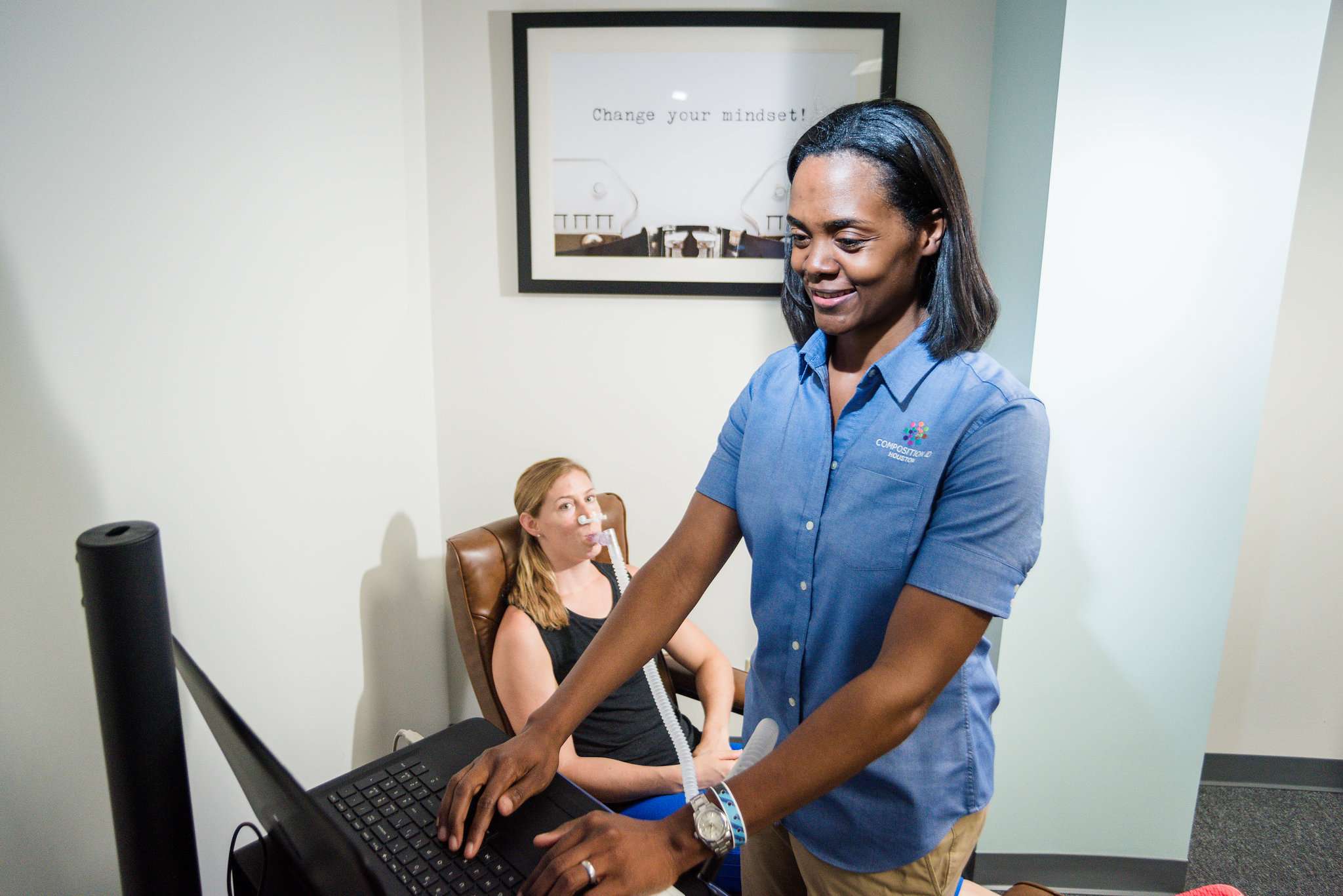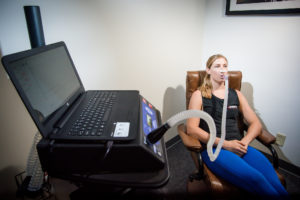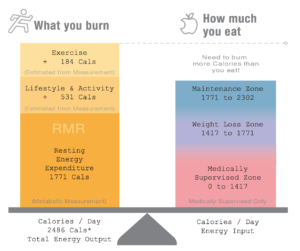To see results after making a body composition goal, it’s crucial to understand your specific metabolic information. A Resting Metabolic Rate (RMR) test provides the details you can’t guess by yourself or calculate online. Interpreting results from an RMR test is also important to understand how a tailored nutrition plan can help achieve your desired body composition changes.
What is an RMR Test?
Resting Metabolic Rate (RMR) is a personalized, data-driven approach to calculating how many calories your body burns in a day at rest. For those monitoring caloric intake, it’s important information to have in order to set daily intake targets. RMR is calculated using a 10-minute mouth-only breathing test at a dedicated facility. A machine captures the properties of the breath (mainly oxygen consumption) to measure the rate of energy consumption. Typically, burning 1 calorie requires 208.06 milliliters of oxygen.
How to Interpret an RMR Test
In general, an RMR test shows how many calories the body burns each day at rest, then calculates how many calories are required to consume in order to lose or gain weight. The report itself shows individual’s general energy balance depicted by a scale graphic that “balances” what the body burns versus how many calories to consume to maintain or lose weight.
What you burn: There are three main components of this measurement: an estimate of the number of calories burned during 30 minutes of moderate exercise, the number of calories burned during daily lifestyle activities, and the number of calories the body burns at rest (resting metabolic rate or basal metabolic rate).
How much you eat: Three “zones” are represented by blue, purple and red spectrum of colors. Each represent a range of calories needed to maintain weight (blue zone), lose weight (purple zone), as well as a medically supervised range (red zone).
Additional data on an RMR report show how many weeks are required to reach a target weight goal (defined at the time of the test) with and without adding exercise. A basic ranking of metabolic speed is estimated on a Likert-like scale of “fast” versus “slow” metabolism. This compares metabolic rate to what is “normal” based on age, weight, height, and sex, according to scientific studies.
Achieving Results with an RMR Test
Knowing RMR results makes achieving body composition goals straightforward and actionable. After establishing RMR data and solidifying a goal weight loss (or maintain), a nutrition coach can create a meal plan that provides the correct number of calories that fall within the allotted calorie threshold to promote weight loss or maintenance. A coach also works with each person individually to craft a meal plan that aligns with their lifestyle and preferences. Over time, a plan can be reassessed or tweaked based on progress towards a goal.
An RMR test is essential to obtain before committing to a nutrition and exercise program. There is little guesswork involved while working with RMR testing technology, unlike online calculators that are not calibrated to each individual’s unique (and actual) energy expenditure. To understand more about RMR testing, call a Composition ID location near you!





